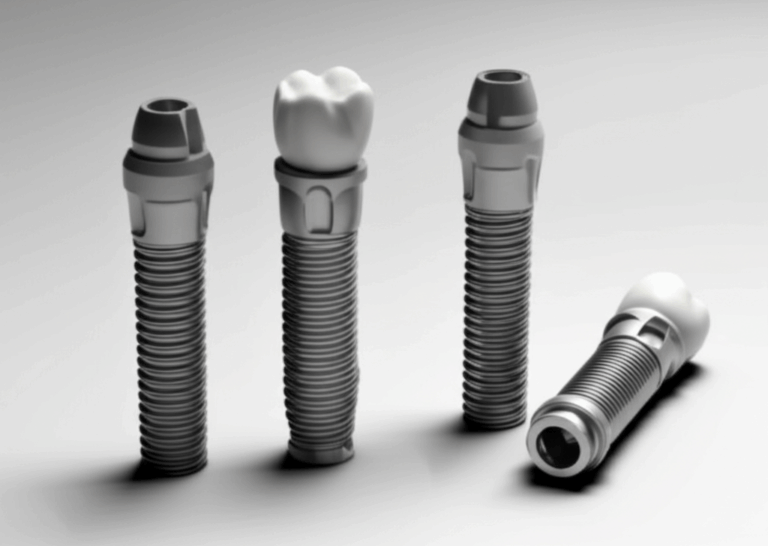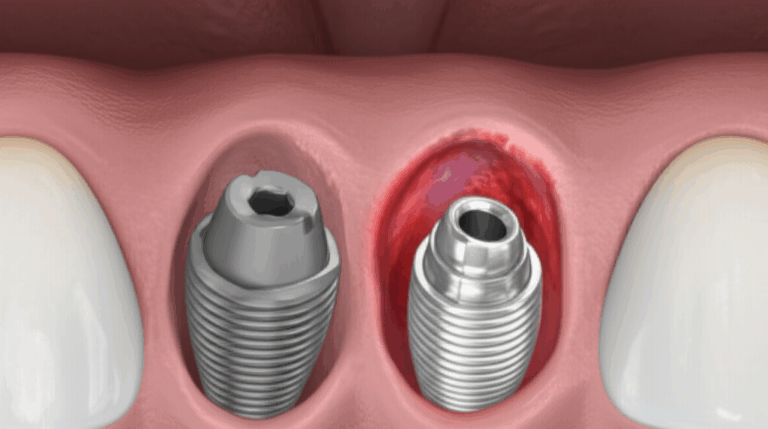
The Unvarnished Truth: What They Don’t Tell You About Dental Implants
Table of Contents
- Outline Overview
- Introduction: Why I Needed to Know More Than the Sales Pitch
- The Real Cost: More Than Just the Implant Price Tag
- Initial Consultation and Hidden Diagnostic Fees
- Ancillary Procedures: Bone Grafting, Sinus Lifts, and Extractions
- The Price of Components, Follow-Ups, and “Extras”
- Financing Surprises and Insurance Realities
- The Real Pain and Recovery: It’s Not Just “Minor Discomfort”
- Surgical Discomfort That Catches You Off Guard
- Managing Post-Operative Pain and Swelling
- Phases of Healing: What It’s Really Like
- The Mental Side: Patience, Stress, and Living Life
- The Real Time Commitment: Playing the Long Game
- Planning and Waiting: The Pretreatment Rabbit Hole
- The Surgical and Healing Timeline
- More Appointments Than You’d Think
- The Real Risks and Complications: What Can (and Sometimes Does) Go Wrong
- Surgical Risks: The Stuff That Keeps You Up at Night
- Early and Late Complications: From Osseointegration Failure to Peri-Implantitis
- What Factors Really Affect Success?
- The Real Maintenance: More Than Just Brushing and Flossing
- At-Home Care: New Habits and Special Tools
- Professional Maintenance and Ongoing Costs
- The Real Lifespan: “Permanent” Means Something Different in Dentistry
- How Long Do Dental Implants Really Last?
- Replacing Crowns, Abutments, and Managing Wear
- Empowering Yourself: The Crucial Questions to Ask
- Conclusion: My Honest Advice for Anyone Considering Implants
Outline Overview
I. Introduction
II. The Real Cost
III. The Real Pain and Recovery
IV. The Real Time Commitment
V. The Real Risks and Complications
VI. The Real Maintenance
VII. The Real Lifespan
VIII. Empowering Yourself
IX. Conclusion
Introduction: Why I Needed to Know More Than the Sales Pitch
If you’re reading this, you’re probably where I was—wondering if dental implants are actually as good as people say. To be clear, getting dental implants made me smile and eat better. But really, the whole process was nothing like those fancy brochures or super-positive reviews.
I want to tell you everything—stuff I wish I knew before starting. The truth is, there’s a lot they don’t tell you. From hidden costs and pain you don’t expect, to long-term upkeep, my journey was full of things I only learned the hard way—so you don’t have to.
The Real Cost: More Than Just the Implant Price Tag
When I first looked into dental implants, the numbers seemed high, but nobody warned me there were even more costs hiding under the surface. The first price you see is just the start.
Initial Consultation and Hidden Diagnostic Fees
Even before getting started, there were way more checkups than I thought. A single X-ray? Not even close. I had to get a CBCT scan, lots of impressions, and what felt like never-ending molds. None were free, with each one costing something like $100 or $250. Before I knew it, the costs built up.
Ancillary Procedures: Bone Grafting, Sinus Lifts, and Extractions
This is where things really got real. When the dentist looked at my scans, he didn’t say, “You’re perfect for implants!” Instead, he told me my jaw needed help. That meant bone grafting—to add bone where I didn’t have enough. I needed a sinus lift too, which is common for the upper jaw, and suddenly my “easy” implant job became a bunch of surgeries.
You can’t skip the bone graft or the sinus lift if you want your implants to last. The cost? Bone grafts can be a few hundred to a few thousand dollars for each spot. Sinus lifts often go from $1500 up to $5000, and no, my insurance didn’t help.
And don’t forget if you need a tooth pulled before starting. I lost a molar, and it ended up costing more than I thought.
The Price of Components, Follow-Ups, and “Extras”
You might think “implant” means the whole tooth—but it doesn’t. Every piece gets billed separately:
- The implant screw
- The abutment (the middle part)
- The crown (the tooth you see)
Dental labs, especially special ones like a good implant dental laboratory, charge extra for premium crown options like zirconia or e.max. Even getting the color right sometimes costs extra.
Appointments after surgery add even more. Every single visit—checkups, fixing the crown or abutment—it all cost more.
Financing Surprises and Insurance Realities
I had dental insurance, but soon learned it hardly helped with implants. “Implants are elective,” they said. Even with a payment plan, I still had to pay for small “lab” or “anesthesia” charges that kept popping up. Always ask for a full list of charges before you start.
The Real Pain and Recovery: It’s Not Just “Minor Discomfort”
Let’s talk about the pain. It’s not as small as they make it sound.
Surgical Discomfort That Catches You Off Guard
Implant surgery isn’t gentle. There’s a cut, then drilling into bone—it’s a sound and feeling I won’t forget. Even with numbing shots, I felt pressure and odd shaking. Later, my face swelled up like I got punched. Bruising happened too. Some people get lucky, but it’s usually not as simple as a filling.
Managing Post-Operative Pain and Swelling
My dentist said Tylenol was enough. Honestly, I needed real pain medicine for at least the first couple days. The swelling got worse for two days and stuck around more than a week. My mouth felt numb and sore after. Ice packs and waiting were my best friends.
Eating was a pain. I lived on smoothies, mashed potatoes, eggs…again and again. Crunchy foods? Nope. I was hungry and mad a lot of the time.
Phases of Healing: What It’s Really Like
Nobody mentioned there are lots of different healing parts:
- Right after surgery, you deal with cuts and swelling.
- Then you wait months for the implant to stick to your bone, called osseointegration. There’s not much pain, but the area stays sore, and it’s stressful not knowing if it worked.
- When it’s time for the abutment, you usually need another small surgery to open the gum. More pain, more care.
- Only after all this do you get a real crown.
And during all this, you might have odd feelings—like numb lips (mine went away) or weird tingling.
The Mental Side: Patience, Stress, and Living Life
Honestly, the months felt forever. You start off excited, but all the waiting, strict eating, and extra appointments wear you down. I wondered if it was worth it. People don’t talk about the stress, the worry that something will go wrong, or feeling a bit powerless. But all of that is real.
The Real Time Commitment: Playing the Long Game
“New tooth in a day!” Not really.
Planning and Waiting: The Pretreatment Rabbit Hole
First off, all the checkups and planning take time. From my first X-ray to the 3D scan, it took weeks to even get to surgery. If you need bone work or a sinus lift, that’s more months waiting for your mouth to heal. My journey went like this:
- Consultation
- Scans and models
- Planning and waiting for bone/other surgery
Nothing goes fast. Everything takes time—approvals, scheduling, and healing.
The Surgical and Healing Timeline
After the implant goes in, you start waiting again. Osseointegration (when the implant sticks to the bone) takes about three to six months—if it goes well. Some people heal faster, or slower, especially if they smoke or have other medical problems.
No chewing on that side, eating soft foods, and being scared to bump it—I did that for months. Then, another small surgery for the abutment, more healing, and finally the crown. Sometimes you get a quick “temporary” crown, but most wait for the real one.
More Appointments Than You’d Think
I lost track of all the visits. Every step—grafts, implant, abutment, crown—needed a checkup or fix. It takes a lot of time, so be ready for a long process.
The Real Risks and Complications: What Can (and Sometimes Does) Go Wrong
No one wants to think about problems, but not knowing can make things worse.
Surgical Risks: The Stuff That Keeps You Up at Night
Implant surgery is usually safe, but not always. My dentist listed a bunch of things:
- Infection
- Nerve damage (not likely, but scary—numbness, tingling)
- Sinus hole if it’s in the upper jaw
- Too much bleeding or big bruises
I didn’t have major issues, but I know folks who needed antibiotics or even lost the implant because of infection.
Early and Late Complications: From Osseointegration Failure to Peri-Implantitis
The scariest part is waiting to see if the implant “takes.” Not everyone’s body likes it. They say the success rate is about 95-98% for the lower jaw and 90-95% for the top—but that still means a few people fail.
Why?
- Smoking
- Weak bone
- Bad diabetes
- Mistakes by the dentist
Even after healing, you can get gum disease around the implant (called peri-implantitis). There’s swelling, bleeding, and a bad taste. You have to keep things clean all the time.
The abutment can loosen, the screw break, the crown chip, or gums pull back—all can mean more trips to the dentist.
What Factors Really Affect Success?
From my experience (and from what I read), a few things matter a lot:
- How healthy you are (smoking, weak bones, diabetes)
- How you clean your mouth
- How good the dentist is: specialist or not? (This matters a lot.)
- The parts they use—really good zirconia lab or a dental ceramics lab can make the difference.
Don’t go cheap on picking your dentist or taking care of your teeth.
The Real Maintenance: More Than Just Brushing and Flossing
You might think implants are “done and forget.” Not true.
At-Home Care: New Habits and Special Tools
I bought an electric toothbrush (yep, another cost), then got a water flosser after my hygienist said I needed it. Floss can hurt some parts, so you have to use special brushes or tools. You can’t rush anymore—cleaning the implant needs care and time.
If you slack off, bad infections can come fast.
Professional Maintenance and Ongoing Costs
Even cleanings at the dentist are different now. They use new tools for the implant, and I had to go every three months instead of every six. That’s more money, more appointments, and you can’t skip them. Every missed visit puts the implant at risk.
If things are tricky, or you have lots of work, go to a place that works closely with a good crown and bridge lab—they stand by what they build and fix it if needed.
The Real Lifespan: “Permanent” Means Something Different in Dentistry
How Long Do Dental Implants Really Last?
They say implants are “permanent.” Really, the screw inside your bone might last decades—sometimes even 25 years or more. But “forever” is a stretch.
Things like grinding your teeth, hard food, clenching your jaw, or certain health problems (like diabetes or weak bones) can cause trouble over time. Tech changes, too, so what’s great now could be outdated later.
Replacing Crowns, Abutments, and Managing Wear
The part you see—the crown—won’t last as long. Most crowns last 10-15 years before they chip, loosen, or break. The abutment in the middle might need to be replaced, especially if bone or gums become a problem.
Getting a replacement means more dentist visits and money, and most lifetime promises don’t cover the whole thing. If the main screw fails, it’s a big problem.
Empowering Yourself: The Crucial Questions to Ask
If I could start again, I’d speak up more at my first visit. Here are questions you should ask before agreeing to anything:
- What’s my total, detailed cost—including every scan, surgery, and “extras?”
- Will I need bone graft, sinus lift, or a pulled tooth? What’s the chance, and the cost?
- How long is the whole process, really, including healing time?
- What risks do I have with my health? How do you help lower those?
- What help do you offer after surgery or in an emergency?
- How much have you done cases like mine? What’s your success and problem rate?
- What brand/type of implant do you use? Why that one?
- What long-term care should I plan for and save up for?
These aren’t trick questions. They help you stay in control and get the truth you need.
Conclusion: My Honest Advice for Anyone Considering Implants
Looking back, getting dental implants gave me lots of good things: a nice smile, eating without worry, and I felt better about myself. But it took dealing with lots of surprises, pain, and hidden costs. The hype hides most of the hard parts.
If you’re thinking about implants, be ready and ask lots of questions. Push for full honesty, and know yourself—how much pain, risk, or effort you can handle. Read up, ask for stories from real people, and check out guides like teeth health or dental diseases so you see the whole picture.
You only get one set of teeth. Make your choice carefully—it matters.
If you read all this, I hope my experience helps you avoid the tough spots and make a real, smart choice. With implants, the truth isn’t always pretty, but knowing it is always worth it.








